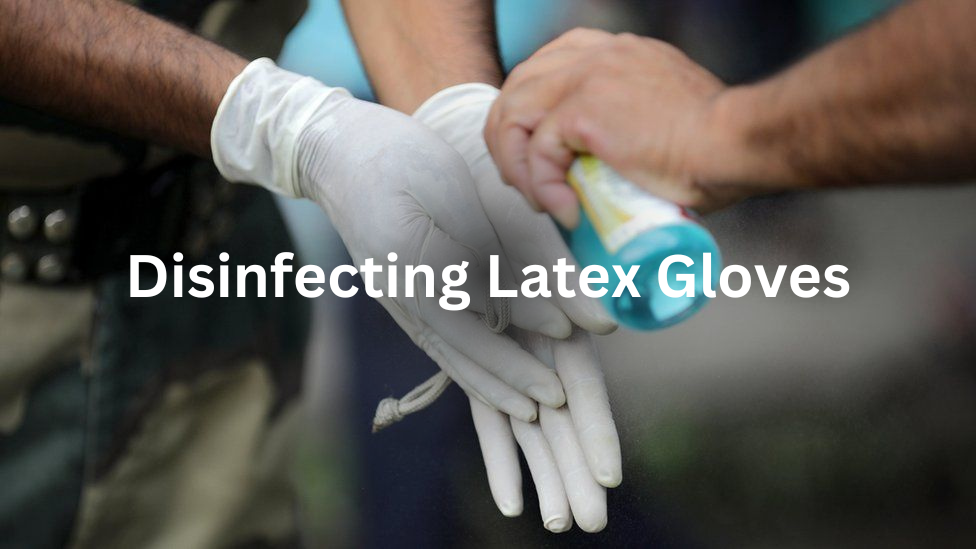Introduction:
Latex gloves are a popular personal protective equipment (PPE) used in many settings, including healthcare facilities, food service, and cleaning. They provide a protective barrier against potential infections, but they can also become contaminated with bacteria and viruses. It is important to disinfect latex gloves to prevent the spread of harmful pathogens. In this article, we will discuss the various methods and best practices for disinfecting latex gloves.
Why is disinfecting latex gloves important?
Disinfecting latex gloves is crucial for preventing the spread of infections. When people wear gloves, they can come into contact with potentially infectious materials, including bodily fluids and contaminated surfaces. If the gloves are not properly disinfected, the pathogens can spread to other surfaces and people, leading to the transmission of infections.
Methods of disinfecting latex gloves:
- Chemical disinfection: Chemical disinfection is one of the most effective methods of disinfecting. It involves using a disinfectant solution to kill harmful pathogens on the gloves’ surface. The most commonly used disinfectants for gloves are alcohol-based solutions, hydrogen peroxide, and bleach.
- Alcohol-based solutions: Alcohol-based solutions are a popular choice for disinfecting gloves because they are effective against a wide range of pathogens, including bacteria, viruses, and fungi. To disinfect latex gloves with alcohol, you should first clean the gloves with soap and water to remove any dirt or debris. Then, immerse the gloves in the alcohol solution for at least five minutes. Afterward, rinse the gloves with water and let them dry completely before using them again.
- Hydrogen peroxide: Hydrogen peroxide is another effective disinfectant that can be used to disinfect latex gloves. To disinfect gloves with hydrogen peroxide, you should first clean the gloves with soap and water. Then, immerse the gloves in a 3% hydrogen peroxide solution for at least 30 minutes. Afterward, rinse the gloves with water and let them dry completely before using them again.
- Bleach: Bleach is a strong disinfectant that can be used to disinfect latex gloves. However, it should be used with caution because it can cause discoloration and degradation of the gloves over time. To disinfect gloves with bleach, you should first clean the gloves with soap and water. Then, mix 1 tablespoon of bleach with 1 quart of water and immerse the gloves in the solution for at least 10 minutes. Afterward, rinse the gloves with water and let them dry completely before using them again.
- UV light disinfection: UV light disinfection is another effective method of disinfecting latex gloves. It involves using UV light to kill harmful pathogens on the gloves’ surface. To disinfect gloves with UV light, you should first clean the gloves with soap and water. Then, place the gloves under a UV light for at least 30 minutes. Afterward, let the gloves dry completely before using them again.
Best practices for disinfecting latex gloves:
- Clean gloves before disinfecting: Before disinfecting latex gloves, it is important to clean them with soap and water to remove any dirt or debris on the surface. This will help ensure that the disinfectant solution can penetrate the surface and effectively kill harmful pathogens.
- Use appropriate disinfectants: When disinfecting latex gloves, it is important to use appropriate disinfectants that are effective against the pathogens you are trying to kill. Always follow the manufacturer’s instructions for the disinfectant solution to ensure proper use.
- Let gloves dry completely: After disinfecting latex gloves, it is important to let them dry completely before using them again.
- Store gloves properly: After disinfecting and drying latex gloves, it is important to store them properly to prevent contamination. Store gloves in a clean and dry location, away from direct sunlight, and other potential sources of contamination.
- Replace gloves regularly: Latex gloves are not meant to be reused indefinitely. Replace gloves regularly to ensure they remain effective in protecting against potential infections. The frequency of glove replacement will depend on the frequency of use and the type of activity being performed.
Conclusion:
Disinfecting latex gloves is a crucial step in preventing the spread of infections. There are several effective methods of disinfecting, including chemical disinfection and UV light disinfection. When disinfecting latex gloves, it is important to follow best practices, including cleaning the gloves before disinfecting, using appropriate disinfectants, letting gloves dry completely, storing gloves properly, and replacing gloves regularly. By following these guidelines, you can ensure that your latex gloves remain an effective form of PPE in preventing the spread of infections.

